Download AGIVEN PROGRAM ]
Transcript
US005635989A Umted States Patent [19] [11] Patent Number: 5,635,989 Rothmuller [45] Date of Patent: Jun. 3, 1997 [54] METHOD AND APPARATUS FOR SORTING 5,479,268 12/1995 Young et a1. ........................... .. 348/13 AND SEARCHING A TELEVISION PROGRAM GUIDE 5,485,197 5,488,409 1/1996 Hoarty ....... .. 348/12 1/1996 Yuen et a1. ................................ .. 348/5 OTHER PUBLICATIONS [75] Inventor: Michael Rothmuller, San Diego, Calif. _ _ 1995 Primary Examiner-John K Peng Assistant Examiner-Nathan J. Flynn Attorney, Agent, or Firm—John T. Whelan; Wanda Denson [21] Appl. No.: 600,576 [22] Filed: _ V1deoGu1de User’s Manual, V1deoGu1de, Inc., pp. 11-15 [73] Assignee: Hughes Electronics, Los Angeles, Calif- _ Low Feb. 13, 1996 [57] ABSTRACT [51] Int. 01.6 ..................................................... .. H04N 7/17 [52] US. Cl. ............................... .. 348/563; 348/1; 348/10; . _ 343/553; 348/569; 348/906 comprising program information for a plurality of di?erent [58] Field of Search .............................. .. 348/906 12 13 Pmg‘am “mm The Pmg‘am infmna?on incl‘ldes “16 A method and aPParatus for Searchmg a Progmm gulde titles of the programs, the channel on which each program [56] 348/1’ 2’ 5’ 6‘ 10’ 468’ 473’ 553’ 55%,; is to be shown, and the time at which each program is to be References Cited shown. The viewer ?rst enters the title of a desired program The program guide is then reviewed so as to identify each occurrence of the title of the desired program If the desired program is contained in the guide, the time and channel associated with each identi?ed occurrence of the program is U'S' Pm DOCUMENTS 4,751,578 5,253,066 5,410,367 6/1988 Reiter et a1. ........................ .. 348/13 X 10/1993 Vogel ............. .. displayed. .. 4/1995 Zahavi et a1. ......................... .. 348/725 15 Claims, 5 Drawing Sheets PROGRAM GUIDE EHANNEL SELECTION BY VIEWER MONITOR nunnou 6' AGIVEN PROGRAM ] 1S SELECTED FPR VIEWING SAME PROGRAM VIEWED FOR A PREDETERMINED PERIOD OF TlgiE YES STORE PROGRAM NAME m FAVORITE CHANNEL HST 63 J US. Patent Jun. 3, 1997 I2 8 I . . . . . . . . . . . . . . . “F . 2 . . . . . - - . . . - - . _ . 1 ls-vmeoz . - - - ~ . - - - - v ~ - - - - \ 2; 26 “Pl/F DECODER ;-' ---- I : L NTSC: ' I WDEO I 1 msc ~ ‘ Auma ouwur ‘ DRIVERS I M LOCAL 5 E : . ENCODER § _; 3' 5 ; AUDIO 5 SUBSYSTEM - - - - - - - , . . - - - . . . . . . . .‘ : DEMUX i. - . 5 = = z , \ HP 4b- CARD 1 ; 2 25 ...TMNSPQBT..I SYSTEM ~ MICROPROCESSOR RA" CARD ; READER; km 2 1 J K12 m ‘ ncua f ,5,’ -_ l8 ;_/ 1 ; INTERFACE : BUS "ODE" I1 E J = .DECRYPTION; 2 I6 ' = , DECODER ‘5 E '" mco -' - ; J Elm/W21: ........... “ks 5 ~ - AUDIO i- E ACCESS 5 ACCESS 5 5 5 f PERIPHERALS 33 mm ; ‘ 5 PSTN < =; DECODER I PROGRAMMING, s - 5 CHANNEL y : - 3 PM" I 1 war; - “PI/F» I ‘ . I ‘ — . . I . _ _ n \ i ‘ - mu I ‘ ‘ . FE£ up”; 5 28 ~10 5 ; ‘L____+ _> 5 5,635,989 l4 ‘ 2 _ l3 1 IFLE \9 . Sheet 1 of 5 ‘~~~~\; ‘ MOTHERBOARD = +‘ ' POWER mom PANEL SUPPLY m a 25s 2 é40 US. Patent Jun. 3, 1997 Sheet 2 of 5 PROGRAM GUIDE 5,635,989 WED, NOV 23 - |2:33PM COMPLETE NORMAL [ MAIN MENU )[ CATEGORIES )( TYPES X uSTSjUumES )[CLASSES) TODAY DTV l2:30 PM DIREUV |:00 PM lz30 PM DIRECTV 200 . CAPITAL GANG CRT VERDICTS & 203 JUSTICE SPORTS NEWS J INSTANT JUSTICE TNT < SINBAD AND THE EYE OF THE TIGER 2T2 TBS 233 BULLITT ESPN C-SPAN 242 ME 55 DAYS AT PEKING 256 C-SPAN FIG. 2 C-SPAN v US. Patent Jun. 3, 1997 Sheet 3 of 5 5,635,989 PROGRAM GUIDE REVIEW PROGRAM GUIDE TO DETERMINE IF GUIDE CONTAINS DESIRED PROGRAMS YES RECORD TIME AND CHANNEL INFORMATION FOR EACH OCCURRENCE OF DESIRED PROGRAM DISPLAY TIME AND CHANNEL INFORMATION OF DESIRED PROGRAMS )1 FIG. 3 US. Patent Jun. 3, 1997 Sheet 4 of 5 PROGRAM GUIDE ‘ CHANNEL smcnou BY VIEWER \ 60 MONITOR numnon A GIVEN PROGRAM :5 smcm) m VIEWING 6‘ SAME PROGRAM VIEWED FOR A PREDETERMINED PERIOD OF TIME YES STORE PROGRAM NAME m ‘3 ,1 mom CHANNEL LIST @ FIG. 4 5,635,989 US. Patent Jun. 3, 1997 Sheet 5 of 5 PROGRAM GUIDE GENERATE FAVORITE PROGRAM LIST > \ 70 T REVIEW PROGRAM 7' GUIDE TO DETERMINE IF A FAVORITE PROGRAM Is III PROGRAM GUIDE RECORD BROADCAST INFORMATION EoII 73 _/ FAVORITE PROGRAM CONAIN IN PROGRAM GUIDE I NOTIFY VIEWER OF P] TIME ANY CHANNEL OF BROADCAST OF FAVORITE PROGRAM 5,635,989 5,635,989 1 2 The present invention relates generally to a method of METHOD AND APPARATUS FOR SORTING AND SEARCHING A TELEVISION PROGRAM GUIDE searching a program guide comprising program information for a plurality of different program sources. The program information includes the titles of the programs, the channel on which each program is to be shown, and the time at which BACKGROUND OF THE INVENTION each program is to be shown. According to the novel 1. Field of the Invention The present invention relates generally to a subscription As the subscription television industry has grown, pro viders of subscription television continually offer more and method, the viewer ?rst enters the title of a desired program. The program guide is then reviewed so as to identify each occurrence of the title of the desired program. If the desired program is contained in the guide, the time and channel associated with each identi?ed occurrence of the program is displayed on a display screen. The present invention also relates generally to a method of generating a favorite program list from a program guide more channels to the individual subscriber. Typical systems offer more than 100 different channels. Such systems also programs, for a plurality of different program sources. The television system and more particularly, to a method and apparatus for sorting and searching program guides based on the viewer’s favorite programs. 2. Description of the Prior Art typically display a channel or program guide, which iden ti?es all available channels, the programs currently airing on each channel and upcoming programs. For example, US. Pat. No. 4,751,578, US. Pat. No. 5.353.121 (the ’l21 patent), US. Pat. No. 5,253,066, all of 10 comprising program information, including the titles of the method comprises the steps of monitoring the duration of 20 which are herein incorporated by reference, disclose typical channel guides. As shown, for example, in FIG. 1 of the ’121 patent, the channel guide comprises a plurality of channel identi?ers and a listing of the shows and programs upcoming on each channel. The channel guide illustrated in FIG. 1 is native method of generating a favorite program list from a 25 nate the title of a program to be included on the favorite program list, and then storing the title of the viewer designated program in memory means. The titles of pro the viewer to sort the guide on the basis of prede?ned categories or themes, such as, movies, sports, news, etc., or by a user de?ned favorite channel list. Sorting the channel guide by themes allows the viewer to display a subset schedule of the entire channel guide, which contains only 35 displayed in the channel guide. Notwithstanding the foregoing methods of sorting and program on the favorite program list is included in a for example, via an on-screen message or prompt, if any program on the favorite program list is included in the signi?cant number of channels, typically in excess of 100, in an e?ort to determine whether a speci?c television program is airing currently, or sometime in the near future, remains do not provide a simple means for the user to determine the next time the program will be broadcast or aired. Indeed, at any given time. Star TrekTM could be airing on any of a number of channels. As such, the viewer would be forced to scan the entire guide and review programs currently airing, as well as future events for all channels. to determine all scheduled broadcasts of the desired program With the plethora of channels provided by most systems, this search ing can require a considerable amount of time. Accordingly, there exists a need for displaying and sorting a channel guide which allows the viewer to readily deter mine and identify when a desired program will be broadcast without the viewer having to perform an extensive search on the entire channel guide for current and future events. SUMMARY OF THE INVENTION The present invention provides a method and apparatus for sorting and displaying a channel guide which satis?es the aforementioned needs. Speci?cally, the present invention provides a method and apparatus for sorting and displaying a channel guide based on the name or title of the program. grams stored in the memory means form the favorite pro gram list. The present invention also relates generally to a method of notifying a viewer when a predetermined favorite pro gram is to be broadcast. The method comprises generating a favorite program list which includes the titles of programs, analyzing the favorite program list to determine if any program guide comprising program information for a plu rality of ditferent program sources, and notifying the viewer, displaying the channel guide, the necessity to scan over a a signi?cant problem. For example, assuming the viewer desires to watch an episode of Star Trekm, current systems program guide comprising program information, including the titles of the programs, for a plurality of different program sources. The method comprises enabling a viewer to desig sorted (i.e., arranged or ordered) by channel number (i.e., program source). Such known systems for generating channel guides allow programs in the selected category. The user de?ned favorite channel list allows the user to specify favorite channels and then de?ne the order in which those channels will be time a given program is selected for viewing, and then storing the title of the program in memory means if the program is selected for viewing for a prespeci?ed period of time. The titles of programs stored in the memory means fonn the favorite program list. The present invention also relates generally to an alter program guide. 45 As described in detail below, the method and apparatus of the present invention provide important advantages over the prior art. Most importantly, the present invention allows the viewer to readily determine and identify when a desired program will be broadcast without the need for performing an extensive search of the entire channel guide for current and future events. The invention itself, together with further objects and attendant advantages, will best be understood by reference to the following detailed description, taken in conjunction with the accompanying drawings. BRIEF DESCRIPTION OF THE DRAWINGS FIG. 1 is a functional block diagram of an apparatus capable of generating program guides and display screens in accordance with the present invention. FIG. 2 illustrates an exemplary program guide produced by the apparatus of FIG. 1. FIG. 3 is a ?ow chart illustrating a method of generating a display screen identifying each occurrence of a speci?ed program in accordance with the present invention. FIG. 4 is a ?ow chart illustrating an exemplary method of generating a favorite program list. 5,635,989 4 3 The microprocessor 15 operates to periodically update the FIG. 5 is a flow chart illustrating a method of notifying a viewer when a predetermined favorite program is to be broadcast. DETAILED DESCRIPTION OF THE DRAWINGS FIG. 1 is a functional block diagram of an apparatus 10 capable of generating program guides and display screens in accordance with the present invention. As shown in FIG. 1. the apparatus 10 includes receiving means comprising tuner 12. demodulator 13 and FEC decoder 14. The receiving means is controlled by a microprocessor 15, and operates to receive a signal which includes program guide information, and video and audio information for all channels available on the given system. 10 Upon reaching the expiration date/time. the microprocessor In the embodiment of FIG. 1, an antenna 8 and low noise ?lter 9 function to receive the signal from a satellite source 15 updates the program guide stored in system RAM 20 with the program guide currently being transmitted. and to couple the signal to the tuner 12 of the receiving means of the apparatus 10. However, it is noted that the Returning to FIG. 1, the apparatus 10 of the present invention further comprises a MPEG chip 22. The MPEG chip 22 comprises a video decoder and an on-screen display 24, and an audio decoder 25. The MPEG chip 22 functions to decompress the audio and video data output by the channel demultiplexor 16, which is transmitted by the pro vider in a compressed format. The NTSC encoder 26 and audio subsystem 27 format the decompressed audio and present invention is not limited to system providers which utilize satellite transmissions to broadcast signals. The novel system of the present invention could be readily used with system providers who supply signals via, for example, cable or telephone lines. The program guide information could also be provided via such mediums as CD ROM. Upon receipt of the signal, tuner 12 functions to down convert the received signal to an intermediate frequency (“IF”) signal. The IF signal is then converted to a digital equivalent by the demodulator 13 and coupled to FEC decoder 14, which provides forward error correction on the received signal. Apparatus 10 also comprises a transport chip 11. The transport chip 11 preferably comprises a channel demulti 25 audio and video information of each channel. and also separates the program guide information. Under control of 30 program guide, which can be accomplished by selecting the prede?ned channel associated with the program guide, via front panel 30 or a remote control 40, the microprocessor 15 retrieves the program guide information from system RAM 20, and then accesses a font table stored in memory. The 35 microprocessor 15 then converts the program guide infor mation stored in memory 20 into a displayable font data. The displayable font data is then coupled to the MPEG chip 22. As described above, the MPEG chip 2 in combination with the microprocessor 15, the channel demultiplexor 16 pro vides at its output port, the audio and video information of a selected channel or the program guide information. video data, respectively, for display on, for example, a television receiver. The output drivers 28 function to trans mit the audio and video information of a selected channel to the display screen of the television receiver. In the event the subscriber/viewer selects to display the plexor 16, a decryption unit 17 and an access card interface 18. The output of the FEC decoder 14 is coupled to the channel demultiplexor 16, which functions to separate the program guide information stored in the system RAM 20. In the present embodiment, the program guide information is preferably updated one of two ways. First, the microproces sor 15 periodically analyzes the program guide information transmitted by the system provider to determine if the information has been updated. This can be accomplished, for example, by utilizing a flag bit which indicates that the program guide has been modi?ed. If the program guide has been modi?ed, the microprocessor 15 stores the updated guide in the system RAM 20. Second, as an independent process, the microprocessor 15 monitors an expiration date/ time transmitted along with the program guide information. 40 Transport chip 11 further comprises an access card reader NTSC encoder 26 and the output drivers 28, functions to write the program guide information to the television receiver at the start of the next available frame. FIG. 2 19 which is coupled the access card interface 18. The access illustrates an exemplary program guide produced by appa card interface 18 operates in conjunction with the decryption ratus 10. As shown in FIG. 2, each screen of the program unit 17 and the access card reader 19 to provide a means of preventing. for example. unauthorized pay-per-view movies from being ordered by children. Apparatus 10 further comprises a telco modem 31 which allows the microprocessor 15 to be coupled to the public telephone network, microprocessor peripherals 33, such as CD ROM, and a power supply 35 for supplying power. In the satellite system illustrated in FIG. 1, multiple transponders located in a satellite (not shown) are utilized to transmit channel information (e.g., audio, video) to the apparatus 10. Each transponder transmits information regarding multiple channels (i.e., multiple program sources, such as ABC, CBS, etc.). However, each transponder also 45 guide comprises approximately seven program sources and the corresponding programs. The program source and the programs being shown thereon are displayed on a single line comprising multiple cells of varying length. The ?rst cell in each line indicates the program source and the channel number assigned to the source. In order to view additional 50 55 transmits the program guide information for every channel program information, the viewer simply presses a desig nated key, such as a page down key (i.e., scroll down key), and the foregoing process is repeated for the new program data to be displayed. In accordance with the present invention, the apparatus 10 is also capable of generating a display screen identifying each occurrence of user-speci?ed programs of interest (i.e., tuned to, the program guide information is available at the output of the channel demultiplexor 16. Under control of the favorite programs). FIG. 3 is a ?ow chart illustrating a method of generating such a display screen. Referring to FIG. 3, the ?rst step 50 in the method requires the viewer to enter the title of each program of interest (e. g., Star Trek“). One method of entering the title of the program is via an infra-red “IR” remote 40 control device. (The IR remote 40 microprocessor 15, the program guide information is stored includes a switch array which provides means for users to provided by the system provider on one of the frequencies available within the given transponder. As such, regardless of which transponder the tuner 12 is in random access memory (“RAM”) 20, which is coupled to the transport chip 11. The system RAM 20 also functions to buffer the digital data associated with the audio and video data of a given channel. 65 issue instructions to the microprocessor 15. The IR remote 40 communicates with the microprocessor 15 via lRreceiver 42.) To enter the title. the viewer maneuvers a cursor on the program glide 49, for example, as shown in FIG. 2, so as to 5,635,989 5 6 highlight the program of interest. Once the program is 20. Each time a given program is viewed for a period of time highlighted, the viewer depresses a SEARCH key provided exceeding the predetermined period of time, the program on the IR remote 40. title is stored in memory. The list of program titles stored in memory 20 forms the favorite program list. Depression of the SEARCH key commands the micro processor 15 to determine if the program currently high More speci?cally, the microprocessor 15 operates to tune lighted by the viewer is contained anywhere else in the program guide (Step 51). More speci?cally, upon depression of the SEARCH key, a search command is forwarded to the microprocessor 15 via the IR receiver 42. Upon receipt of the search command, the microprocessor 15 records the title of the program currently identi?ed and compares the 10 recorded title with the title of each program contained in the current program guide 49 stored in RAM 20 (Step 52). If no the tuner 12 to the desired channel in response to the viewer’ s channel selection (Step 60). In accordance with the present method, upon forwarding a tuning command to the tuner 12. the microprocessor 15 records the selected channel and starts a counter (Step 61). The microprocessor 15 also records the title of the program currently broadcasting on the selected channel. The title of the program is obtained by retrieving the program guide information associated with the selected channel from memory 20. As noted above, the program guide information for every channel is transmitted by the system provider and stored in memory 20. If the additional matches are found, the process proceeds to Step 53 to determine if any additional program titles need to be compared to the program guide 49. If there are no additional program titles, the process is complete. Returning to step 52. if additional matches are found, the microprocessor 15 records the channel of broadcast and time viewer continues watching the same program for a prede termined period of time (Step 62), the microprocessor 15 stores the title of the program in memory 20 in a list, which has heretofore been referred to as the favorite program list of broadcast of each occurrence of the program (Step 54), and then proceeds to determine if additional program titles need to be compared to the program guide 49 (Step 55). If not, the process proceeds to Step 56 and displays the time and channel information recorded in Step 54 for each (Step 63). The prede?ned period of time is programmable, and can be set by the viewer. Each time a program is viewed for a duration exceeding the predetermined period of time, the microprocessor 15 will occurrence of a desired program The information is dis 25 function to store the title of the program on the favorite played on the display screen via the same components program list. The microprocessor 15 also functions to store the date and time the program title was added to the favorite program list. If the program title is already on the list, the utilized to display the program guide. Alternatively, the title of the desired program can be entered via a keyboard (not shown) and/or an IR remote microprocessor 15 simply functions to update the date and time stamp of the given program. Furthermore, the micro which provides for entry of alphanumeric characters. The processor 15 can be programmed to arrange the ordering of keyboard or IR remote must be coupled to the micropro cessor via an appropriate data channel. According to this entry method. the viewer types the title of the program to be located. The viewer then depresses a SEARCH key located on the keyboard or IR remote, which causes the transfer of the programs contained on the favorite program list on the 35 the program title to the microprocessor 15, and which commands the microprocessor 15 to perform the search as described above. As noted, the foregoing method of the present invention provides for multiple programs to be searched simulta The present method also provides for the deletion of program titles from the favorite program list. For example, in the event that the memory allocated for the favorite program list is full and a new program title should be stored, multiple titles or via the keyboard. In the event that multiple titles are entered, the microprocessor 15 searches the pro gram guide 49 currently stored in RAM 20 for each program the microprocessor 15 will determine the program title having the oldest (i.e., most prior in time) date/time stamp and then replace the oldest program title with the new program title to be stored. Another method of deleting program titles from the favorite program list is to automatically remove the program title, and all occurrences of each program title are identi?ed on the display screen. It is also noted that all steps subsequent to step 50 in the 50 processor 15. As mentioned above, the present invention also relates to a method for automatically generating a favorite program list. The favorite program list identi?es by title, the programs most frequently watched by the viewer. The favorite pro gram list can also include information. such as, the time and channel of the next occurrence of each program contained in program list, the second most frequently watched program will appear second, and so on. Of course, the microprocessor 15 will arrange the ordering of the list as necessary to maintain the proper order. neously. More speci?cally, during the title entry process, the viewer may enter multiple titles, either by highlighting foregoing process are performed automatically by the micro basis of which programs are most frequently watched. Thus, the most watched program will appear ?rst in the favorite 55 title from the list after expiration of a prede?ned time period According to this method, if the date/time stamp associated with a given program exceeds the prede?ned time, for example, two months, the program title is removed from the list. The microprocessor 15 can be programmed to periodi cally review the favorite program list to determine if any programs should be deleted. This method provides a means for automatically “aging” programs off the favorite program list. The period of time prior to expiration is also programmable, and can be set by the viewer. the favorite program list. FIG. 4 is a ?ow chart illustrating an exemplary method for automatically generating a favorite program list. As shown in FIG. 4. once the viewer selects a channel for viewing (step 60), the microprocessor 15 records the time the viewer selected the channel and the name (i.e., title) of the program currently broadcasting on the selected channel. If the viewer continuously views the same program for a predetermined 49 on the display screen. Then, the viewer maneuvers a 65 cursor on the program guide so as to highlight the program period of time, the microprocessor 15 functions to store the title of the program in memory, for example, system RAM of interest. Once the program is highlighted, the viewer depresses a FAV-STORE key provided on the IR remote 40. In an alternative method for generating a favorite program list, the viewer designates the titles of the programs to be included on the favorite program list. More speci?cally, the viewer commands apparatus 10 to display the program guide 5,635,989 7 8 Depression of the FAV-STORE key commands the micro processor 15 to determine if the program currently high lighted by the viewer is contained on the favorite program list. More speci?cally, upon depression of the FAV-STORE by the microprocessor 15 preferably lists all such programs, as well as their respective channels and start times. key, a command is forwarded to the microprocessor 15 via the 1R receiver 42 which instructs the microprocessor 15 to review the current favorite program list and add the program title to the list, in the event the program title is not already on the list. If the program title is currently on the favorite program list, the microprocessor 15 generates a message which is displayed on the display screen inquiring whether the viewer desires to delete the highlighted program title from the 10 favorite program list. If so. the viewer depresses a DELETE key provided on the IR remote 40. Depression of the DELETE key commands the microprocessor 15 to delete the highlighted program title from the favorite program list. Alternative methods of entering program titles on the favorite program list include depression of the FAV-STORE key when viewing a speci?c program. When the FAY STORE key is depressed While viewing a program, the microprocessor 15 records the title of the program currently broadcasting on the selected channel by retrieving the pro gram guide information associated with the selected channel from memory 20. The microprocessor 15 then stores the program title of the current program on the favorite program The foregoing method also allows the viewer to command the microprocessor 15 to automatically tune the receiver to the channel broadcasting the favorite program at the appro priate time. More speci?cally, upon receiving an on-screen display indicating that a favorite program will be broadcast in the near future, the microprocessor 15 generates an “Auto-Tune” prompt which is also displayed on the display screen. If auto-tuning is desirable. the viewer depresses an AUTO-TUNE key provided on the IR remote 40. Depres sion of the AUTO-TUNE key commands the microprocessor 15 to record the channel and time of broadcast of the favorite program, and subsequently to tune the tuner 12 to the appropriate channel at the time of broadcast. The method and apparatus of the present invention pro vides several important advantages over the prior art. Most importantly, the present invention allows the viewer to readily determine and identify when a desired program will be broadcast without the need for performing an extensive search of the entire channel guide for current and future events. . In addition, each of the favorite program lists described 25 list if it is not there already. If the program title is already contained on the list, the microprocessor 15 generates the above can be employed to create timer events, which are utilized to control devices, such as a VCR for recording a future program. For example, a viewer can bring-up a favorite program list and select a program for which a timer event should be created. Upon selection of the program, the microprocessor 15 accesses the relevant information (i.e., delete prompt as described above. It is noted that the favorite program list generated by either method described above can be displayed on com mand of the viewer. The favorite program list identi?es each occurrence of the programs contained in the current program guide. In other words, the favorite program list identi?es, at a minimum, the time and channel of each occurrence of the 35 programs. Further, in the event that no program on the favorite program list is contained in the program guide, the viewer is noti?ed of this fact via a display screen. The present invention also relates to a method of notifying a viewer when a favorite program is to be broadcast. The method allows the viewer to be noti?ed in advance, via an date, time channel, length) which is stored in the favorite program list, and then forwards this information to the designated device at the appropriate time. Of course, it should be understood that a wide range of changes and modi?cations can be made to the preferred embodiment described above. It is therefore intended that the foregoing detailed description be regarded as illustrative rather than limiting and that it be understood that it is the following claims, including all equivalents, which are on-screen message, that a program on the favorite program intended to de?ne the scope of the invention. What is claimed is: 1. A method of generating a favorite program list from a list will be broadcast in the near future. The viewer can program guide comprising program information for a plu rality of different program sources, said program informa specify how far in advance (e.g., 5 minutes, 30 minutes, etc.) the noti?cation occurs. 45 Referring to FIG. 5, the ?rst step in the method (Step 70) enabling a viewer to designate the title of a program to be included on said favorite program list; and comprises generating a favorite program list. This can be accomplished. for example, by any of the various methods described above. Once the viewer activates the apparatus 10, the microprocessor 15 periodically compares the favorite program list to the program guide 49 currently stored in ,storing the title of the viewer-designated program in memory means, said titles of programs stored in said memory means memory 20 (Steps 71 and 72). In the event that a program on the favorite program list is contained in the program forming said favorite program list. 2. The method of generating a favorite program list according to claim 1, wherein designating the title of a guide 49, the microprocessor 15 records the title of the program. the time of broadcast and the channel of broadcast (Step 73). Then, at a predetermined time prior to broadcast, the microprocessor 15 generates an on-screen message con taining this information (Step 74). In the event that a favorite program is being broadcast when the apparatus 10 is initially turned on, the micropro tion includes the titles of the programs, said method com prising the steps of: 55 program comprises selecting the desired program from said program guide via user input means. 3. The method of generating a favorite program list according to claim 1, wherein designating the title of a program comprises depression of a predetermined key on said user input means while viewing the desired program. 4. The method of generating a favorite program list according to claim 1, wherein said favorite program list favorite program is currently running. The message will includes the channel on which each program is to be shown, indicate the title of the program, the channel of broadcast and the time at which each program is to be shown. and that the program is currently on. 5. The method of generating a favorite program list 65 according to claim 4, wherein said favorite program list is In the event that a plurality of favorite programs are to be displayed. broadcast at the same time, the on-screen message generated cessor 15 will generate an on-screen message in the same manner as described above to inform the viewer that a 5,635,989 10 9 13. An apparatus according to claim 9, wherein said titles of programs forming said favorite program list are arranged 6. The method of generating a favorite program list according to claim 1, further comprising the step of: on the basis of which programs are most frequently watched. 14. A method of generating a favorite program list from storing the title of the program in memory means if said program is selected for viewing for a prespeci?ed a program guide comprising program information for a plurality of different program sources, said program infor mation including the titles of the programs, said method period of time. 7. The method of generating a favorite program list according to claim 1. further comprising the step of: comprising the steps of: deleting a title of a program stored in said memory means if said program is not selected for viewing for a monitoring the duration of time a program is selected for prespeci?ed period of time. viewing; and 8. The method of generating a favorite program list according to claim 1, wherein said favorite program list is storing the title of the program in memory means if said program is selected for viewing for a prespeci?ed utilized to create a timer event. period of time, 9. An apparatus for generating a favorite program list from a television program guide. said apparatus comprising: said titles of programs stored in said memory means forming said favorite program list, means for receiving a signal. said signal including pro and wherein a viewer can store the title of a program in said memory means. gram information for a plurality of di?erent program sources. said program information including the titles of the programs, the channel on which each program is to be shown. and the time at which each program is to 15. An apparatus for generating a favorite program list from a television program guide, said apparatus comprising: means for receiving a signal, said signal including pro be shown; memory means coupled to said receiving means; user input means for enabling a viewer to designate a title of a program to be included on said favorite program 25 list, said title being stored in said memory means; a system controller coupled to said memory means and said user input means, said system controller operative for storing the title of the program designated by said viewer in said memory means; and display means coupled to said system controller, said display means operative for displaying said titles of programs stored in said memory means forming said favorite program. 10. The apparatus for generating a favorite program list according to claim 9, wherein designating the title of a 35 selected for viewing for a prespeci?ed period of time; and program comprises selecting the desired program from said program guide via user input means. 11. The apparatus for generating a favorite program list according to claim 9, wherein said favorite program list includes the channel on which each program is to be shown, and the time at which each program is to be shown. 12. A method according to claim 1, wherein said titles of programs forming said favorite program list are arranged on the basis of which programs are most frequently watched. gram information for a plurality of di?erent program sources, said program information including at least the titles of the programs, the channel on which each program is to be shown, and the time at which each program is to be shown; memory means coupled to said receiving means; user input means for selecting a program for viewing; a system controller coupled to said memory means and said user input means, said system controller operative for monitoring the duration of time a program is selected for viewing, and for storing the title of the program in said memory means if said program is display means coupled to said system controller, said display means operative for displaying said ti?es of 40 programs stored in said memory means forming said favorite program list, wherein said user input means further operates to allow an operator input a title of a program in said memory means. *****












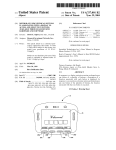
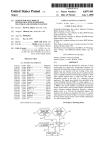
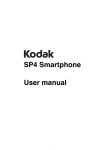

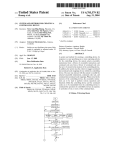
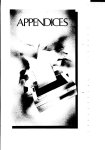

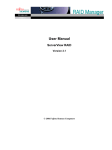
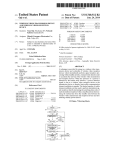
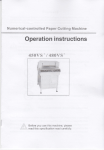
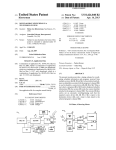

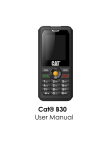

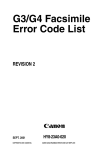

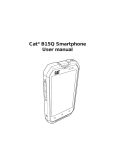

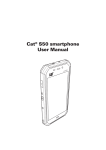

![El WE]](http://vs1.manualzilla.com/store/data/005973526_1-5126190d8f2880fb7d5b7ddc41b9f31a-150x150.png)